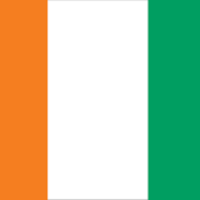As of 2023, the population of Côte d’Ivoire was estimated at 28 million people and is considered one of the largest in West Africa. Currently, the population is young, with a median age of 19 years (Jasińska & Guei, 2022). It represents young people and consequently supports industries such as textile and agriculture industries that involve manual manpower (Nohoua, 2021). High population growth rates bring about issues such as pressure expected to be addressed by providing employment, education, and infrastructure (Zonkouan et al., 2022). The population is growing rapidly in cities, including Abidjan.
The Ivory Coast has been described as ethnically and culturally diverse since the country is home to over 60 ethnic groups (Zonkouan et al., 2022). The diversity contributes to the social life of the country and plays a great role in influencing the fabric industry, especially through craftwork and fashion within the regions (Oura et al., 2022). Urbanization is gradually rising in Ivory Coast, and the latest available figure shows that over 50 percent of the Ivorian population resides in urban centers (Sagna et al., 2021). This demographic change is not only increasing domestic demand for apparel but is also fueling growth in the sector as well.



